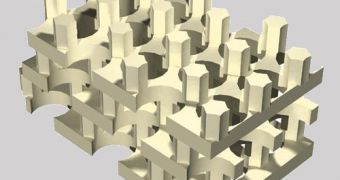The "NewTon" project represents a research activity in the domain of photonic crystals which will have as a result the production of the first functional all-optical components by the end of the next year. Photonic crystals will be produced to create new components that will replace those using electricity to transmit information with light, which can transmit higher amounts of data. Through this development, researchers working on the project hope to revolutionize the future world of telecommunications.
The project, which has been running for over three years, involves a collaboration between BASF researchers and other partners, Hanover Laser Center and the Technical University of Denmark, with the help of the European Union funding.
The presence of optical devices used in telecommunications can already be seen in websites for example that use optical fibers to send and receive high amounts of information in shorter time intervals. But while the optical fibers have the advantage of transmitting data at fast speed, the system still has drawbacks since the nodes used to route all the information still use electronic devices, as a result of the fact that compact optical routing processors are not yet available.
The photonic crystals developed at BASF have the capability of reflecting only a single wavelength of light, meaning they are reflective only to certain colors, depending on the angle at which light is reflected.
To produce these photonic crystals, the BASF team is using aqueous dispersions, which contain spherical polymers particles, about 200 nanometers in diameter, which form protective films similar to that created by paints, as the liquid evaporates. The key to create crystal structures is in the chemical structure of the polymer out of which the polymer particles are made of, which can arrange themselves in a regular structure.
However scientists studying the process to produce these polymers have yet to find a way to enlarge the 200 nanometer particles, up to a diameter of 1000 nanometers, so that the resulting particles will all have the same diameter, in the hope that they will be able to develop the most stable, three-dimensional crystal into which they will be able to insert a desired structure called a 'defect'.
As light travels along these defects, the crystal will behave as a photoconductor, which has control over the propagation of light. To create the crystal, the researcher would fill the spaces in between the spherical polymer particles, with silicon, after which they melt away the polymer, which will result in a stable silicon structure similar to the original crystal that could be used to produce compact all-optical routing processors for telecommunications.
These could also be used to produce high performance, small and cheap electronic components, that would also present the advantage of being less sensitive to electromagnetic radiation.

 14 DAY TRIAL //
14 DAY TRIAL //